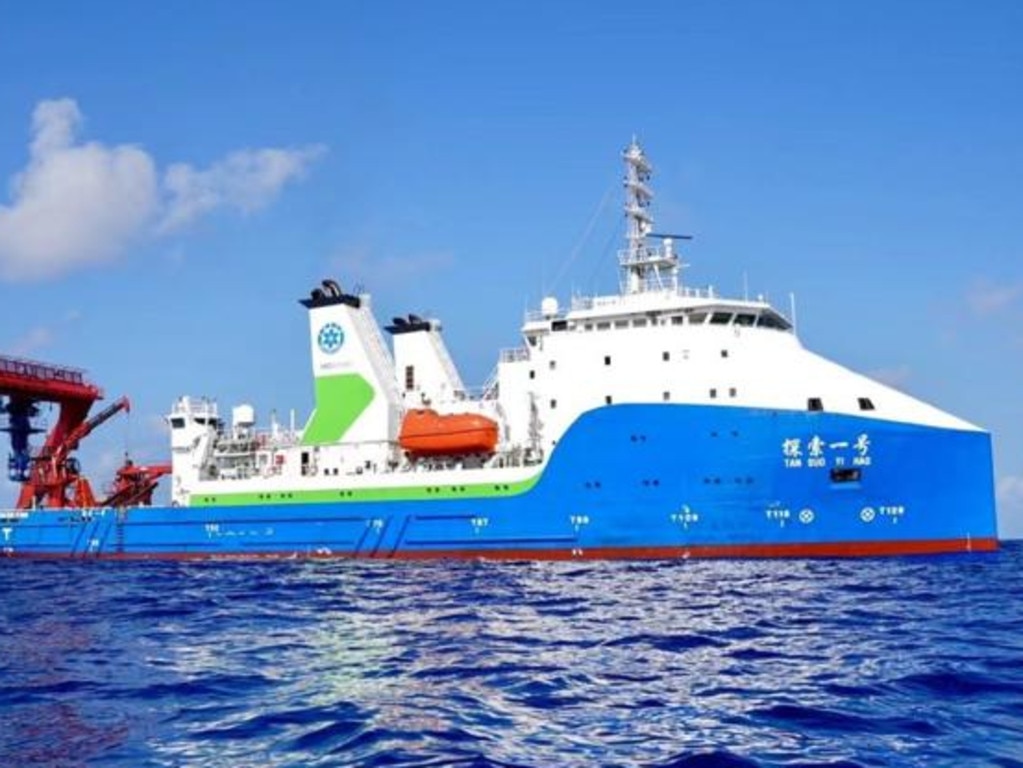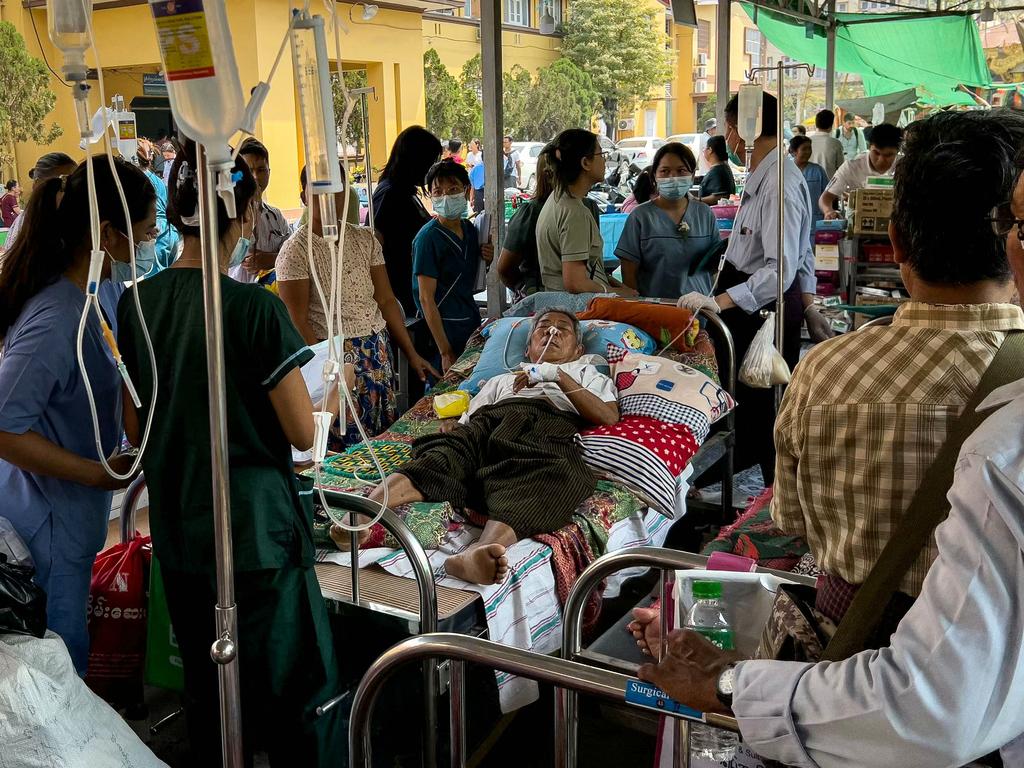‘No drinking water. Dead piled up’: Myanmar junta chokes quake aid to resistance
Myanmar’s military regime has been accused of preventing aid and assistance from reaching opposition areas devastated by Friday’s 7.7 magnitude earthquake.

Myanmar’s military regime has been accused of preventing aid and assistance from reaching opposition areas devastated by Friday’s 7.7 magnitude earthquake amid growing calls for the UN Security Council to intervene to stop fighting between the junta and resistance forces.
The military regime called a minute’s silence at 12.51 pm (5.21pm AEST) on Tuesday - the exact moment the quake struck on Friday - to pay respect to the 2065 people it says has died as a result of the disaster. A further 20 have been confirmed dead in the Thai capital Bangkok where the force of the quake toppled a 30-storey building under construction.
But the junta’s official figures have been contested by the National Unity Government (NUG), a shadow administration of ousted MPs and ethnic leaders that now controls swathes of the country, which says the mounting death toll is now more than 3000.
Many hundreds of those casualties were in Sagaing region, a stronghold of the democratic opposition to the military and the region closest to the epicentre of the earthquake but which has been starved of assistance by a military accused of weaponising aid.
The NUG’s Sagaing township administrator Nway Oo May told The Australian in an online interview that she did not believe the junta’s official death toll included many deaths from Sagaing where casualties in Sagaing city alone had now topped 500, with more than 1000 injured.
The city, which has borne the brunt of some of the most brutal military reprisals since the February 2021 coup that ousted the government of Aung San Suu Kyi, has sustained damage to up to 80 per cent of its buildings and four days after the disaster was still desperate for assistance.
Ms Nway said the NUG, which controls most of Sagaing region, had begun distributing aid across the resistance stronghold but had little capacity for rescues despite the fact dozens of children remained trapped in local schools and monasteries.
“We need heavy vehicles for that and to clear collapsed buildings but they are controlled by the State Administration Council (junta) and they won’t provide them,” she said.
“All we can do is provide food and water and medicine to survivors. People are sleeping in mosques, schools, soccer fields and on the streets.
“Drinking water is very scarce and there is no electricity. The dead are piled up in the crematorium and the smell around the city is very bad because we have not yet been able to remove them from the heavily-damaged areas.”
While emergency assistance teams and aid has begun streaming in to Mandalay and the military-held capital Naypyidaw from UN agencies as well as from China, Russia, Thailand, Singapore, India and Malaysia, little has made it through military cordons surrounding Sagaing and other resistance areas, prompting the UN as well as Human Rights Watch to issue statements demanding unimpeded access.
“Myanmar’s military junta still invokes fear, even in the wake of a horrific natural disaster that killed and injured thousands,” said HRW deputy Asia director Bryony Lau. “The junta needs to break from its appalling past practice and ensure that humanitarian aid quickly reaches those whose lives are at risk in earthquake-affected areas.”

Ms Nway confirmed reports that the military was actively preventing rescue teams from entering Sagaing from neighbouring regions by interrogating teams seeking to enter, imposing tight restrictions on the flow of aid and systematically stalling permission for operations there.
While one Malaysian rescue crew had made it in to Sagaing on Monday they had not yet started working as of midday on Tuesday.
“We will see if they start rescues today,” she said.
The city lies just across the Irrawaddy river from Myanmar’s devastated second city of Mandalay where the BBC reported on Tuesday that dead bodies were being prepared to be “cremated in stacks”.
Four days on from the disaster little hope remains of finding people alive in the rubble. Agencies are now turning their attentions to the overwhelming challenge of providing clean water, food, shelter and electricity to millions of people left destitute.

The NUG has urged the international community to channel all assistance through “trusted and reliable partners to prevent interference and ensure that relief reaches those most in need”.
“We also urge continued vigilance against any attempts by the military junta to divert or obstruct humanitarian assistance.”
A collective of 265 civil society groups echoed that appeal in a statement, warning of the military’s history of weaponising aid and calling on the UN Security Council to intervene to stop the military’s continued air strikes since the earthquake.
“What is the UN Security Council doing? What is the UN Secretary-General doing? When will they act to save Myanmar people?” said Khin Omar, a spokesperson for the collective and the chair of Burmese activist group Progressive Voice.
“How can they provide emergency relief without stopping the military’s continued terror campaign and aerial attacks?”
“International rescue aid is not reaching people that need to be saved, and the junta keep bombing areas, including Sagaing, where people were most severely impacted.“
The NUG _ which has announced a two week partial ceasefire to allow aid to be distributed _ has accused the junta of at least 20 attacks since Friday and of tying up helicopters in aerial attacks on resistance forces instead of deploying them for the rescue efforts.
It also claims the junta plundered the nation’s emergency disaster fund to help finance its military campaign against opposition forces.
Even before Friday’s quake, at least 3.5 million Burmese were internally displaced by the ongoing civil conflict and as many as 20 million of its 55 million people were in need of humanitarian assistance.







To join the conversation, please log in. Don't have an account? Register
Join the conversation, you are commenting as Logout